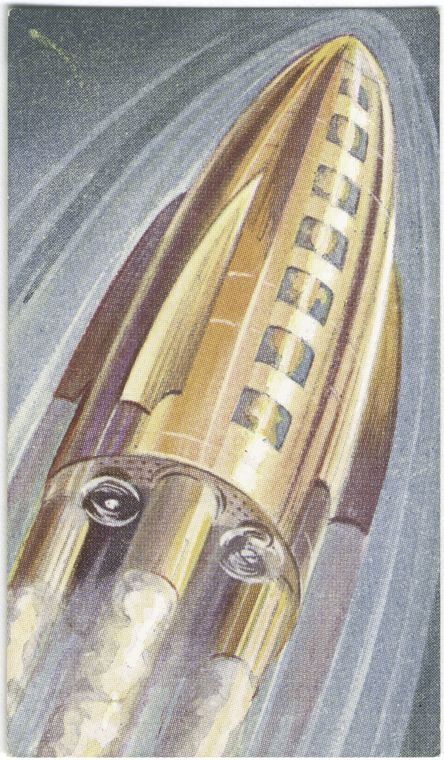Biblio File
Finding George R.R. Martin's Earliest Work
Many readers are aware—perhaps painfully aware—that George R.R. Martin’s A Song of Ice and Fire series has been a decades-long undertaking. The first book, A Game of Thrones, was first published twenty years ago in 1996. What many may not realize is that Martin’s writing career dates back to 1971, with his first short story, “The Hero.” Or, that before becoming a household name in fantasy, Martin began as a science fiction writer, also dabbling in other genres like horror. Finding these early works can be challenging—visiting the bookstore or searching by author in our catalog will only get you so far—because Martin’s short stories, novellas, and novelettes were often published in pulp magazines.
Pulp magazines, so-named for the poorer quality wood pulp paper on which they were usually printed, were a vehicle for short-form fiction from genres like science fiction, fantasy, horror, and detective fiction. With colorful, eye-catching, and sometimes racy covers, these magazines introduced readers to the likes of Isaac Asimov, Fritz Leiber, and Ray Bradbury. Pulp magazines reached a publishing golden age in the 1930s and continue to be produced today. The New York Public Library has collected pulps in both print and, more often, microfilm formats. While some stories were republished in collections or expanded novels, many appear solely in pulps. Fittingly, these humble issues are now time machines in themselves, transporting us back to the hopes, fears, and wildest imaginings of an earlier era of speculative fiction.
Through the Library’s pulp magazines, we can trace the development of talents like George R.R. Martin from the beginning of their careers. Oh, and also read some good, freaky scifi.

George R.R. Martin’s first published piece was “The Hero,” which appeared in the February 1971 issue of Galaxy. A soldier who is matter-of-fact and accomplished in the field, yet politically naïve? Readers might see some hints of Ned Stark in the story’s protagonist.

“A Song for Lya,” originally appearing in Analog Science Fiction and Fact’s June 1974 issue, won Martin his first Hugo award—a mere three years after “The Hero.” Its two main characters are Robb and Lyanna, which should ring bells for any fans of House Stark out there. Prior to 1960, Analog went by the title Astounding Science-Fiction. John W. Campbell, Jr., its editor from December 1937 to 1971, helped foster science fiction’s Golden Age by publishing authors like Isaac Asimov, Robert Heinlein, Theodore Sturgeon, and A.E. van Vogt.

Martin’s Triple Crown, the novelette “Sandkings” won him Hugo, Nebula, and Locus awards. It was first published in 1979 and collected five years later in Omni magazine’s first anthology. It was later adapted into an episode of The Outer Limits, which, by the way, you can check out from the Library.

“Portraits of His Children,” is a horror/suspense narrative that takes place not in deep space or Westeros, but on our very own Earth—Iowa, in fact. This cautionary tale warns of what happens when a writer values his fictional characters over his real-life family. It appeared in Isaac Asimov’s Science Fiction Magazine in November 1985 and won a Nebula for Best Novelette the same year.

Before the game of thrones, Martin introduced us to the “game of mind.” He penned “The Glass Flower” for Isaac Asimov’s Science Fiction Magazine’s September 1986 issue. In this story, a narrator known by the honorific Wisdom seeks to prolong her life, grappling internally with issues of moral relativism and externally with her traitorous council of Apostles. All this before the arrival of the mysterious cybernetic organism Joachim Kleronomas. As Martin says, “there are cyborgs and then there are cyborgs.”

“On the high ramparts of Vargön, Colonel Bengt Anttonen stood alone and watched phantasms race across the ice. The world was snow and wind and bitter, burning cold.” In 1985’s “Under Siege,” collected here in Omni’s seventh science fiction anthology, Martin hints at his master page-turning abilities with a dynamite first sentence. The worldbuilding here also sounds like he is beginning to imagine life beyond the Wall.
To find the pulp magazines included in the Library’s collections, the best way to search the online catalog is by journal title or by one of the subjects below. This will help you uncover print, microfilm, and online issues.
Fantasy fiction -- Periodicals.
Science fiction -- Periodicals.
To see where your favorite authors have been published, first check to see if there is a bibliography of their works. This might be provided on an author’s website, or you might be lucky enough to find a published bibliography like Phil Stephensen-Payne’s George R.R. Martin: The Ace from New Jersey. If no such bibliography exists, a great resource is the Internet Speculative Fiction Database (think IMDB, but for fantasy, scifi, and horror). The Library also holds many print indices, which can be found under subjects like:
Science fiction -- Bibliography -- Periodicals.
Science fiction -- Indexes -- Periodicals.
Read E-Books with SimplyE
 With your library card, it's easier than ever to choose from more than 300,000 e-books on SimplyE, The New York Public Library's free e-reader app. Gain access to digital resources for all ages, including e-books, audiobooks, databases, and more.
With your library card, it's easier than ever to choose from more than 300,000 e-books on SimplyE, The New York Public Library's free e-reader app. Gain access to digital resources for all ages, including e-books, audiobooks, databases, and more.
If you don’t have an NYPL library card, New York State residents can apply for a digital card online or through SimplyE (available on the App Store or Google Play).
Need more help? Read our guide to using SimplyE.
